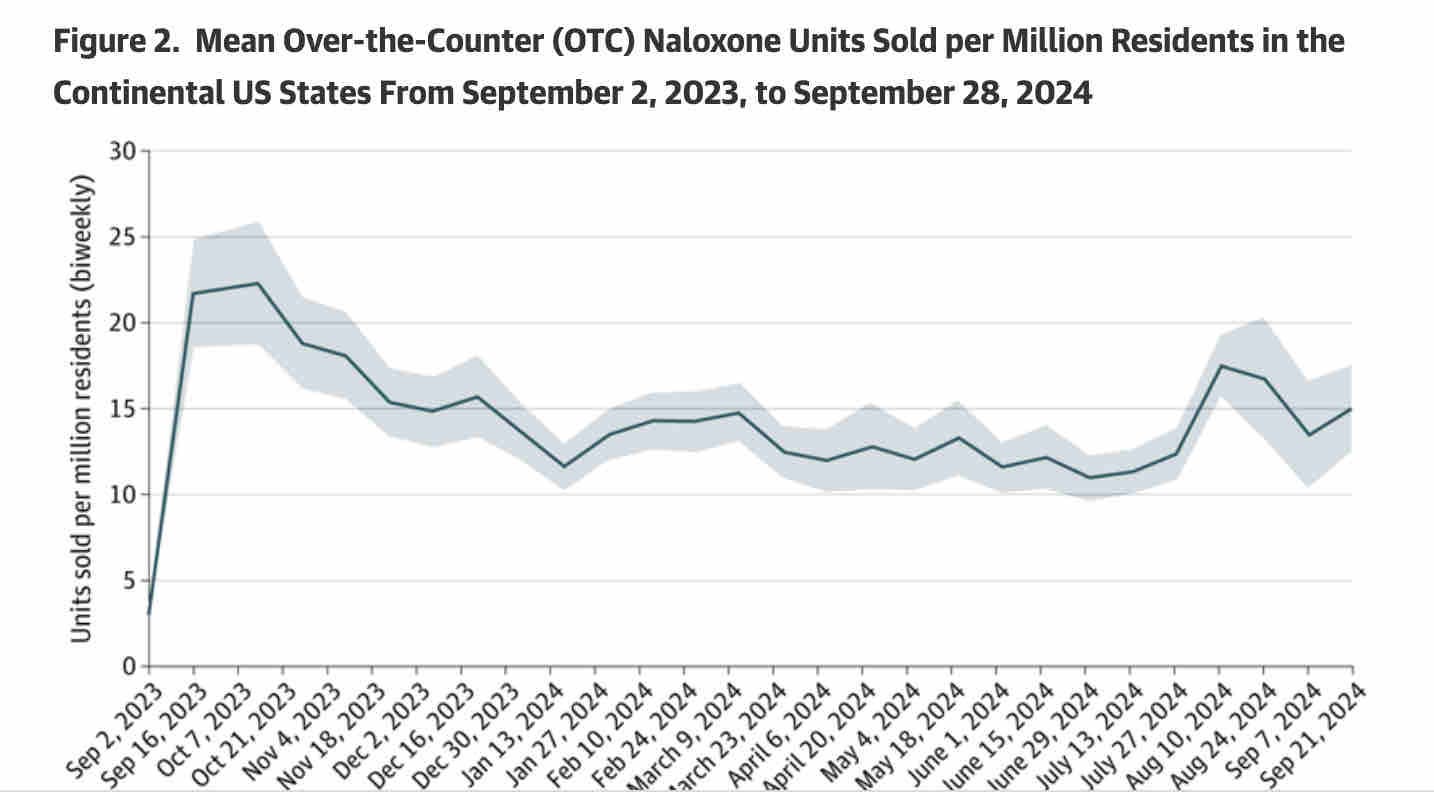Friday Shorts: Access to narcan and MAT, doulas and gene therapy for Huntington's Disease
September 26, 2025
A. Naloxone access in pharmacies
Source: Stein, JAMA Internal Medicine, September 15, 2025
Researchers reported in JAMA Internal Medicine that pharmacy sales of naloxone, which reverses opioid overdoses, rose rapidly after over the counter sales began, and have generally been about 30 units per million residents per month. (The graphic above is biweekly.) This captures only doses that were sold; I got the naloxone in my backpack from my community’s Department of Health at the local library.
Employers can make naloxone available at the workplace to treat narcotic overdoses.
B. Buprenorphine access is lower in communities of color
Researchers reported in Health Affairs that pharmacies were less likely to stock buprenorphine in communities that were poorer or where a larger portion of the population was Black or Hispanic people. Buprenorphine (Suboxone) is the most commonly used Medication Assisted Treatment (MAT) for opioid use disorder. Pharmacies not stocking this medication is a barrier to MAT treatment.
C. Doula availability increased in Massachusetts
The Boston Globe reported on the increasing availability of doulas in Massachusetts, as the state Medicaid agency has encouraged and subsidized doula use. Here is a post from last year about a study that found doulas were associated with lower rates of cesarean sections, especially in Black women. Future Medicaid cuts, though, could put this program in jeopardy.
D. Gene therapy delays progression of Huntington’s Disease
A gene therapy manufactured by Uniqure delayed progression of symptoms of Huntington’s Disease by about 75% in a Phase II study, and the drug is likely to come to market in 2026. The gene therapy partially inactivates the mutant protein that causes Huntington’s, a neurodegenerative disease which affects half of the children of those who carry the gene. The gene therapy requires neurosurgery, and is administered to specific areas of the brain. Huntington’s disease causes dementia, psychiatric symptoms, and a movement disorder. It affects about 20,000 people in the US (calculated from prevalence of 6.5 per 100,000 population).
E. Vaccines linked to decreased risk in dementia
The Washington Post (gift link) has a thoughtful review of the medical literature that suggests that four vaccines (shingles, RSV, influenza, and TdAP. All of the studies are retrospective observational studies, so those who got vaccinated might have been systematically different than those who did not. For instance, they might have been more health-focused, more educated, or wealthier. One study of shingles vaccine, though, is especially convincing because it used a change in government coverage.
Here’s a link to an April post about the shingles study.


